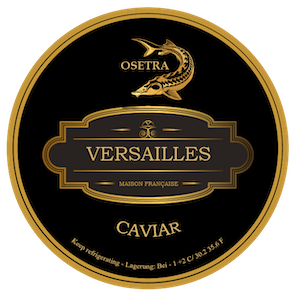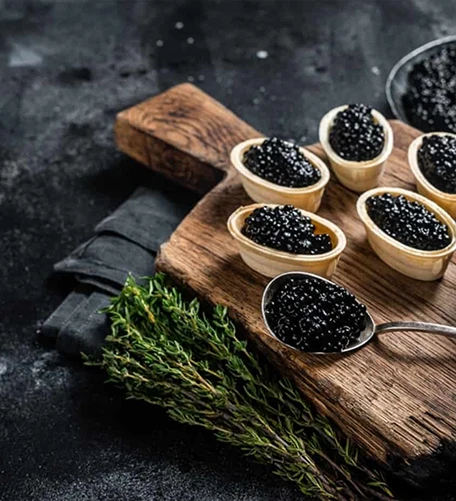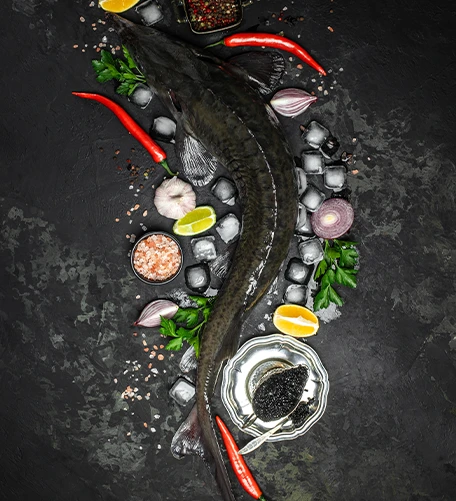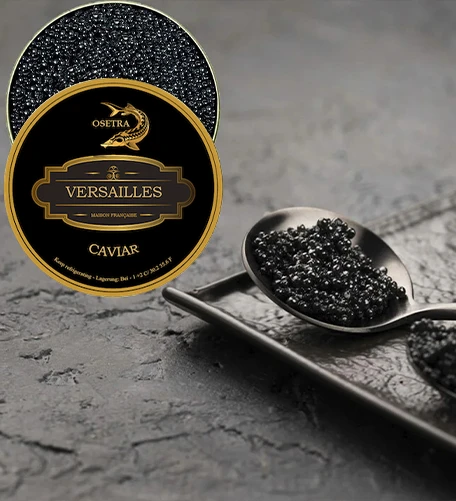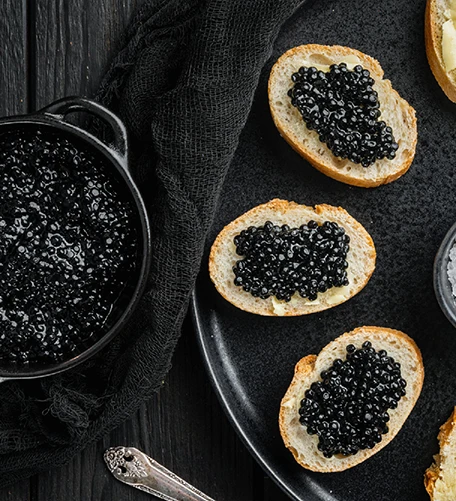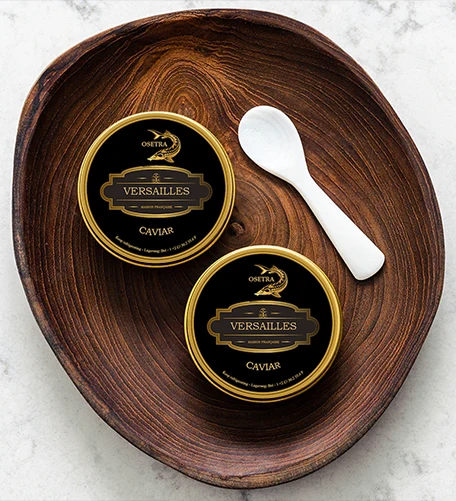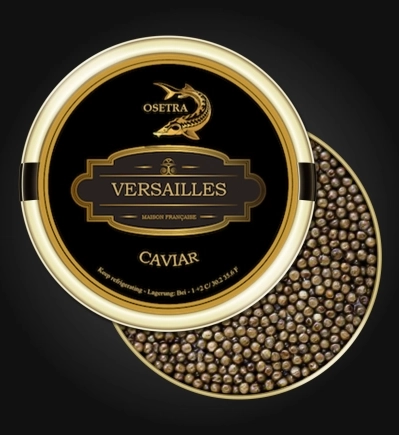Caviar, the luxurious delicacy made from sturgeon roe, has been a symbol of opulence and fine dining for centuries. From its humble beginnings in ancient Persia to its exalted status in modern haute cuisine, caviar has been prepared in countless ways, reflecting the cultural and culinary evolution of different societies. This article explores the rich history of caviar recipes, tracing their development across time and geography.
Ancient Origins: Persia and the First Caviar Consumption
The origins of caviar consumption can be traced back to ancient Persia, where fishermen along the Caspian Sea discovered the nutritional and culinary value of sturgeon roe. The Persians referred to it as khāvyār, meaning "cake of strength," believing it had medicinal properties that provided energy and vitality. While early Persian recipes were simple—often involving lightly salting the roe and consuming it fresh—this marked the beginning of caviar’s culinary journey.
Greek and Roman records from antiquity indicate that caviar was considered a rare delicacy. The Greek physician Hippocrates even recommended sturgeon roe for its supposed health benefits. Romans, known for their elaborate feasts, began incorporating caviar into their banquets, serving it as a salted dish alongside other seafood and wine.
Medieval and Renaissance Europe: Caviar in Royal Courts
During the Middle Ages, caviar became a prized delicacy among European aristocracy, particularly in Russia. The Orthodox Church permitted fish roe during fasting periods, leading to increased demand for sturgeon roe among the Russian elite. The first caviar recipes emerged in Russian monasteries, where monks developed methods for salting and preserving roe for extended periods.
By the Renaissance, caviar had gained prominence in Western European courts. French and Italian nobility began incorporating caviar into their culinary traditions, experimenting with ways to serve it beyond mere salting. Italian cooks developed early versions of caviar-infused pasta dishes, while French chefs began pairing it with buttered bread and soft cheeses.
The Russian Influence: Caviar as a National Treasure
Russia played a crucial role in refining caviar preparation methods. During the 17th and 18th centuries, the Tsars of Russia popularized the consumption of high-quality caviar, sourced primarily from the Volga River and the Caspian Sea. The Russian aristocracy enjoyed caviar in a variety of forms, from simple salted roe to elaborate dishes featuring blini, a type of thin pancake that became a signature pairing.
Traditional Russian Caviar Recipes:
- Caviar with Blini: A classic Russian dish, in which warm blini (thin buckwheat pancakes) are topped with a dollop of sour cream and a spoonful of caviar.
- Caviar with Vodka: Russian nobility often served caviar alongside chilled vodka, which enhanced the roe’s natural flavors.
- Eggs Stuffed with Caviar: Hard-boiled eggs were hollowed out and filled with a creamy mixture of yolk and butter, topped with caviar for an elegant presentation.
By the 19th century, Russia had become the world’s leading supplier of caviar, and its luxurious appeal spread throughout Europe. French chefs, in particular, began incorporating caviar into their haute cuisine, leading to new and innovative recipes.
Caviar in 19th and 20th Century France: The Birth of Fine Dining
During the late 19th and early 20th centuries, French culinary masters such as Auguste Escoffier elevated caviar into the realm of fine dining. Parisian restaurants began serving caviar in elaborate presentations, often alongside champagne. Escoffier introduced caviar as a topping for canapés and incorporated it into refined egg and seafood dishes.
Classic French Caviar Recipes:
- Caviar Canapés: Toasted baguette slices spread with crème fraîche or butter, topped with caviar and a sprinkle of chives.
- Oeufs à la Russe (Russian Eggs): A French take on the Russian stuffed egg recipe, featuring a luxurious creamy caviar filling.
- Caviar and Lobster Thermidor: A decadent combination of lobster in a creamy mustard sauce, garnished with caviar for an extra layer of indulgence.
As international travel and trade expanded, caviar became increasingly popular across the Atlantic, making its way into the culinary traditions of the United States.
Caviar in America: The Rise of Contemporary Caviar Cuisine
In the early 20th century, the United States became a major caviar producer, particularly from sturgeon caught in the Mississippi and Delaware rivers. During Prohibition in the 1920s, American speakeasies offered caviar as a salty snack to encourage more drinking. However, by the mid-20th century, overfishing led to the depletion of American sturgeon, causing a decline in domestic caviar production.
Despite this, caviar remained a symbol of luxury in American fine dining. Chefs in the 1980s and 1990s began experimenting with fusion cuisine, incorporating caviar into unexpected dishes.
Modern American Caviar Recipes:
- Caviar on Potato Chips: A playful take on fine dining, featuring crispy potato chips topped with crème fraîche and caviar.
- Caviar with Wagyu Beef Tartare: High-end restaurants began pairing caviar with raw, finely chopped Wagyu beef, blending umami flavors with the delicate saltiness of roe.
- Caviar Sushi Rolls: Influenced by Japanese cuisine, sushi chefs started incorporating caviar into sushi rolls, adding texture and richness to classic maki rolls.
Caviar in Contemporary Global Cuisine: Sustainable and Creative Approaches
Today, caviar continues to be an integral part of gourmet cuisine, but its production has evolved significantly. Due to overfishing and the decline of wild sturgeon populations, sustainable caviar farming has become the new standard. Countries such as China, Italy, and the United States now produce high-quality farmed caviar, allowing chefs worldwide to create new recipes without harming wild stocks.
Contemporary Caviar Dishes:
- Vegan Caviar Substitutes: With the rise of plant-based diets, chefs have created caviar-like substitutes using seaweed or molecular gastronomy techniques.
- Caviar Butter: A luxurious spread made by blending unsalted butter with high-quality caviar, perfect for spreading on toast or melting over seafood.
- Caviar Ice Cream: A daring combination of sweet and salty, where caviar is infused into a creamy, rich ice cream base for a unique tasting experience.
Conclusion: Caviar’s Enduring Legacy in Culinary History
From ancient Persian feasts to modern molecular gastronomy, caviar has remained one of the most revered delicacies in culinary history. Its recipes have evolved alongside cultural and technological advancements, reflecting the changing tastes and innovations of each era. Whether served in a traditional Russian setting with blini and vodka or as a contemporary fusion dish, caviar continues to symbolize indulgence, refinement, and culinary artistry.
As sustainable practices ensure the future of caviar production, new generations of chefs will undoubtedly continue to push the boundaries of creativity, ensuring that this treasured ingredient remains a centerpiece of gourmet cuisine for years to come.
